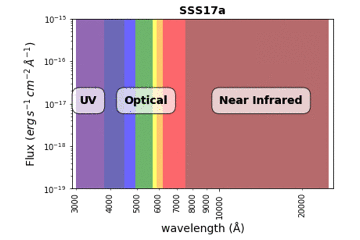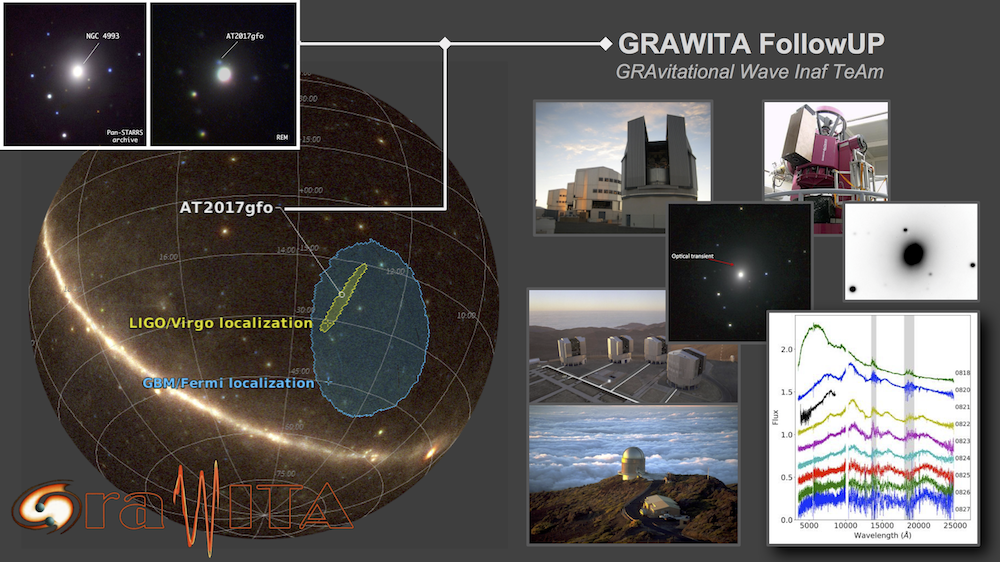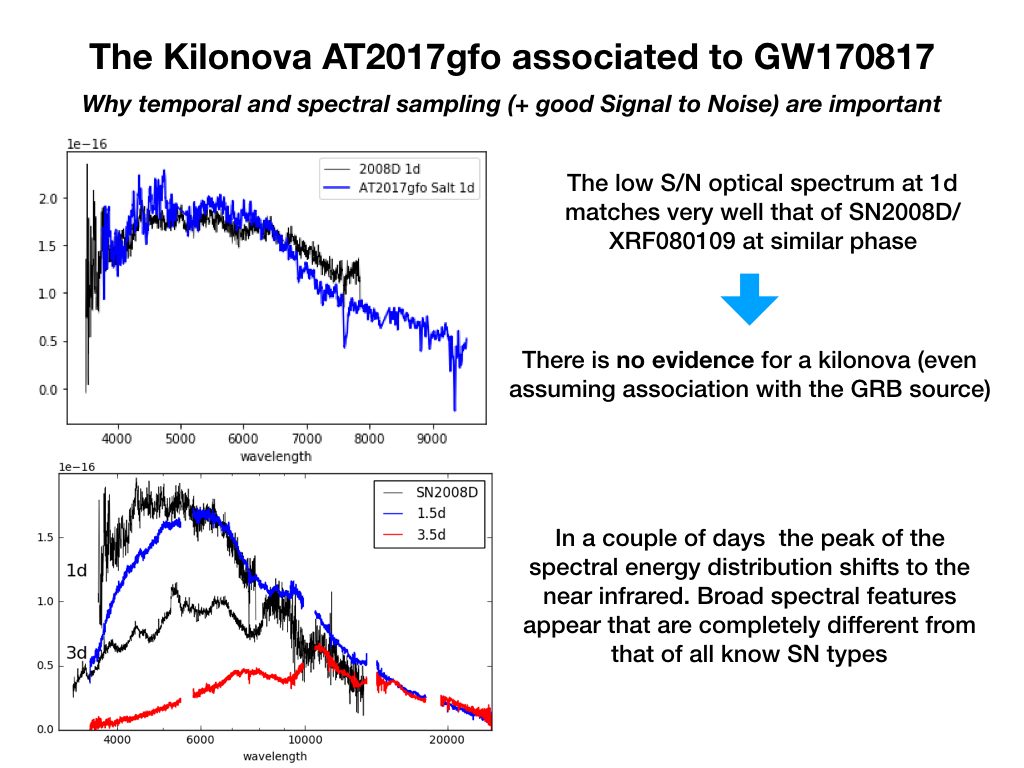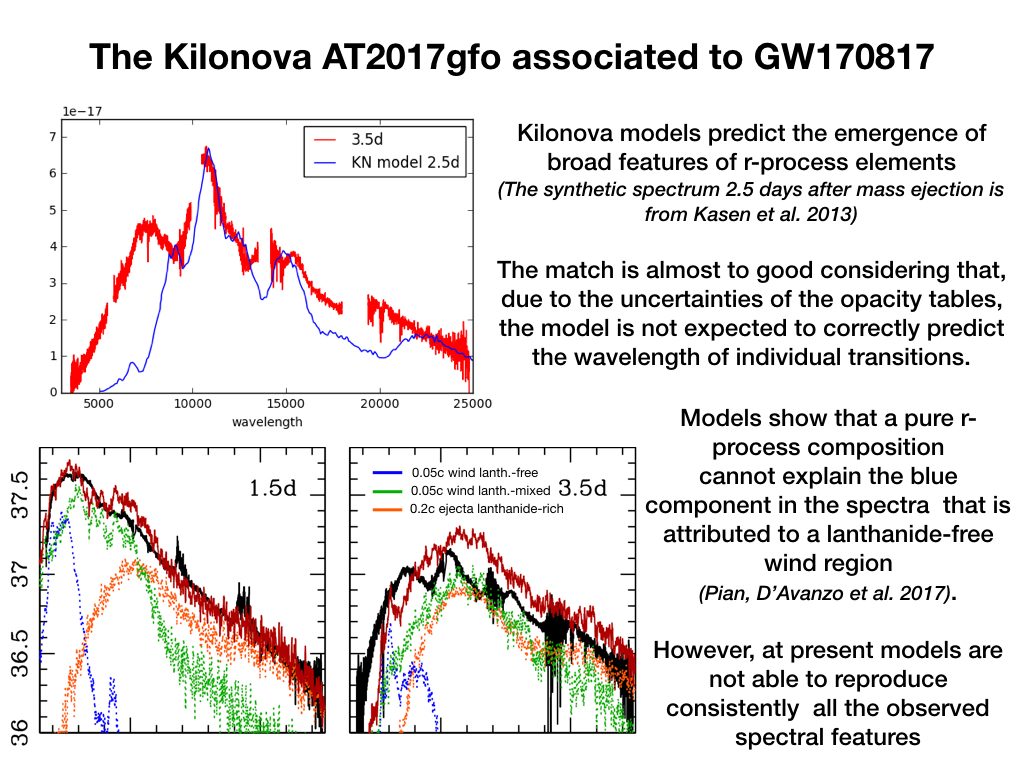The first EM counterpart of a GW observed by GRAWITA
On August 17th 2017 the first electromagnetic counterpart of a gravitational wave (GW) event originated by the coalescence of a double neutron star system (GW 170817, Abbott et al. 2017 Phys. Review) was finally observed. A world-wide extensive observing campaign was carried out to follow-up and study this source, with the forefront participation of our team. In particular, our unique VLT dataset provided the first compelling observational evidence for the existence of “kilonovae”, transient sources powered by radioactive decay of heavy elements resulting from the r–process nucleosynthesis of ejected neutron star matter.
GRAWITA team and international collaborators observed this source with an almost daily cadence during the period Aug 18 — Sep 02, 2017 (~ 0.5–15.5 days after the GW/GRB trigger). This follow-up campaign consisted of imaging (with REM, ESO-VST and ESO-VLT telescopes) and spectroscopic (with the VLT/X-shooter, covering the wavelength range 3200–24800 Angstrom, with VLT/FORS2, covering 3500–9000 Angstrom) observations at optical and NIR wavelengths.

Spectral evolution of the observed light from SSS17a as observed by VLT from 18th to 27th August 2017.
This dataset allow us to follow in detail the evolution of the spectral energy distribution of the AT2017gfo (labelled also SSS17a and DLT17ck) for a period of about two weeks. The first X-Shooter spectrum was obtained 1.5 day after the GW event and shows a blue and bright continuum and allows us to infer a high expansion velocity of the ejected material. In the following epochs the spectrum shape changes and the maximum moves toward the red wavelengths. Our spectra dataset presents rapid changes with time, which are not observed in typical supernova spectral evolution. On the contrary, the overall evolution of the spectra is well interpreted with the behavior expected for a kilonova, confirming the first unambiguous connection between this phenomenon and the gravitational wave signal.
October 16th, 2017



